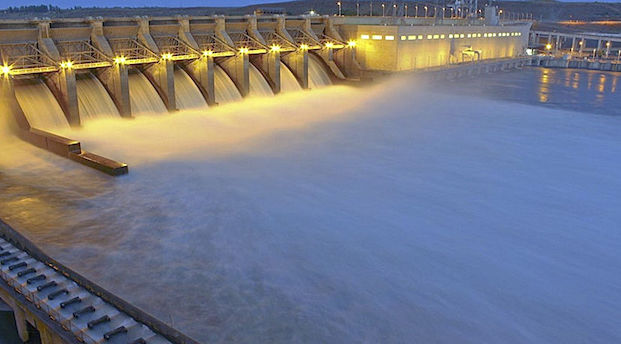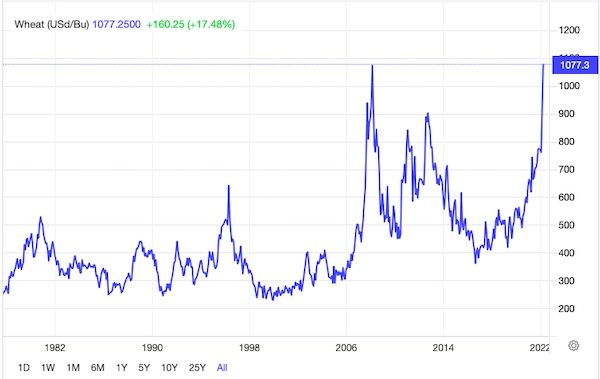forum
library
tutorial
contact

Breaching Snake Dams Would More Than Double
NW Region's Risk of Power Shortages
by Rick Dunn
Tri-City Herald, May 31, 2022
|
the film forum library tutorial contact |

|
Breaching Snake Dams Would More Than Double
by Rick Dunn
|
"The argument to focus only on the Snake is based on projections that have been
consistently wrong, that they ignore what is going on elsewhere in the Northwest,"
-- Todd Myers, director of the Center for the Environment at Washington Policy Center
 For more than two decades Eastern Washington residents have heard proposals to tear out the lower Snake River dams, but only recently has the idea gotten bipartisan support in the nation's capital, said Rep. Dan Newhouse, R-Wash.
For more than two decades Eastern Washington residents have heard proposals to tear out the lower Snake River dams, but only recently has the idea gotten bipartisan support in the nation's capital, said Rep. Dan Newhouse, R-Wash.
He organized a roundtable discussion in Richland on Tuesday, National Agriculture Day, that served as a rally to save the Eastern Washington way of life and a warning that support is growing for removing the dams from Ice Harbor near the Tri-Cities upriver to Lower Granite Dam near Lewiston, Idaho.
In the Puget Sound, he sees signs scattered along roadways with an X through the words "Snake River Dams."
That support from people who don't understand what the dams mean to Eastern Washington is coupled with growing Congressional support and interest from the Biden administration, he said.
Because the dams are federal infrastructure, their future is a federal issue.
There is an effort in Congress to fund removal of the dams and a possibility that the fiscal national spending bill being developed now could include language for dam removal, he said.
The Center for Environmental Quality, which is part of the White House, is focused on a plan which includes looking at the breaching of the dams, he said.
And Sen. Patty Murray, D-Wash., is working with Washington Gov. Jay Inslee, another Democrat, are exploring options to breach the Snake River dams and replace the benefits they provide.
"The rhetoric is high. Pressure is high," Newhouse said. "This is going to be one of those things that's going to take every single one of us."
The message from opponents of the dams is simple. Remove the Snake River dams and save endangered salmon populations and the orca that feed on them.
 SLOW SNAKE RIVER IMPROVEMENT
SLOW SNAKE RIVER IMPROVEMENT
But speakers at the roundtable told about 50 people attending and more listening to a live broadcast that removing the dams would not be the cure-all that is promised.
"So much of what you hear about the populations of salmon on the Snake River is simply wrong," said Todd Myers, director of the Center for the Environment at Washington Policy Center, a conservative think tank.
For instance, environmental groups projected last year -- after a bad year in 2019 -- that within five years wild spring and summer chinook would be functionally extinct on the Snake River, he said.
But in the first year after that prediction, populations increased and they are expected to increase again this year, he said. Populations tend to go up and down based on many factors, he said.
He used a key measure of salmon populations, the smolt to adult return ratio, as another example.
In the Puget Sound where there are no dams there has been virtually no improvement in the smolt to adult return ratio.
But on the Snake River there has been slow improvement, he said.
Breaching the lower Snake River dams could marginally improve salmon passage on the river, but would not significantly improve the prey available to orca populations, he said.
"This doesn't mean do nothing," but use available money for salmon improvements to make the most impact, he said.
COST TO REMOVE DAMS
U.S. Rep. Mike Simpson, R-Idaho, proposed in early 2021 spending $33.5 billion to breach the four lower Snake River dams.
Washington state now spends about $100 million a year on salmon recovery, which makes Simpson's proposal equivalent to more than 300 years of salmon recovery spending just for one stretch of river, Myers said.
It is a giant miscalculation that ignores the opportunities to aid salmon populations elsewhere, including the Columbia River, the Pacific Coast and the Puget Sound, he said.
One option would be to improve the wastewater treatment facilities, which serve 3.9 million people, that are polluting the Puget Sound, said Washington state Rep. Mary Dye, R-Pomeroy.
"The argument to focus only on the Snake is based on projections that have been consistently wrong, that they ignore what is going on elsewhere in the Northwest," Myers said.
It results in proposals to overspend on the Snake and underspend in areas where big differences could be made, he said.
Jerry Dean, who splits his time between the Tri-Cities and commercial fishing in southwest Alaska, said ocean conditions are being ignored as a cause of salmon declines.
Just one river, the Yukon, in the area he fishes is as large as the Snake and Columbia, and has no dams, he said. Yet, chinook fishing still had to be shut down this year for lack of salmon, he said.
The Tri-Cities area has a compelling story that could be told to educate people on the impact of removing dams, not just for the region but for the state, said speakers at the roundtable.
"This idea of breaching the dams will have not only the least benefit, it will cause the most damage," Newhouse said.
 WASHINGTON RAIL, TRUCKING
WASHINGTON RAIL, TRUCKING
Small family farms could go out of business, said Michelle Hennings, executive director of the Washington Association of Wheat Growers.
"We feed the world," said Hennings, whose family raises wheat.
Now Washington state exports 90% of its wheat and 10% of the nation's wheat exports is shipped on the Snake River, she said.
Without barging made possible by dams to provide competition for shipping by rail, prices would increase significantly at a time when wheat prices are volatile, she said.
Rail already has bottlenecks and wheat has to compete for transportation with higher value products, she said.
Increasing rail infrastructure in rural areas has been proposed, but the costs have been underestimated and there is no guarantee that rail lines could be added in areas where it would be needed to replace barging, she said.
Trucks could also be used to ship wheat, but would increase carbon dioxide and other harmful emissions even more than shipping by rail, said Rob Rich, president of the Pacific Northwest Waterways Association.
SNAKE RIVER HYDROPOWER
Every time Rich sees a a four-barge tow on the Columbia River, he knows it is keeping more than 500 semi trucks off the state's road, including two-lane highways in Eastern Washington.
"It is not part of the DNA of the Inland Northwest, particularly Washington state, to move more and more cargo ... using more diesel, putting more emissions in the air, adding to carbon loads," he said.
Increasing the price of transportation of wheat by 50% to 100% because barging is abandoned could take it off of the market and threaten farming communities like Kahlotus and Pomeroy, he said.
The lower Snake River dams also are relied upon to provide 8% of Washington state's electricity, Myers said. It is more than all of the wind and solar production combined in Washington state.
The energy crisis, the supply chain crisis and climate change are all issues for which the Snake and Columbia rivers provide a positive solution, Newhouse said.
But if the Snake River dams come down, that will not be the end, he said.
The end goal of those wanting to breach Eastern Washington dams is to return to free-flowing rivers, he said.
"Our whole economic well-being in our Pacific Northwest, in the nation, would be jeopardized," he said.
learn more on topics covered in the film
see the video
read the script
learn the songs
discussion forum
